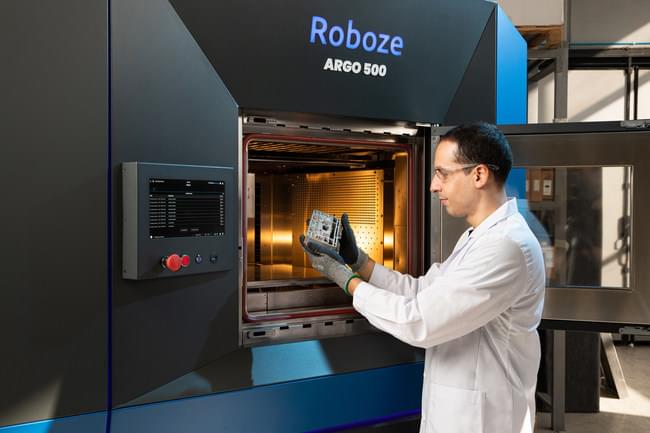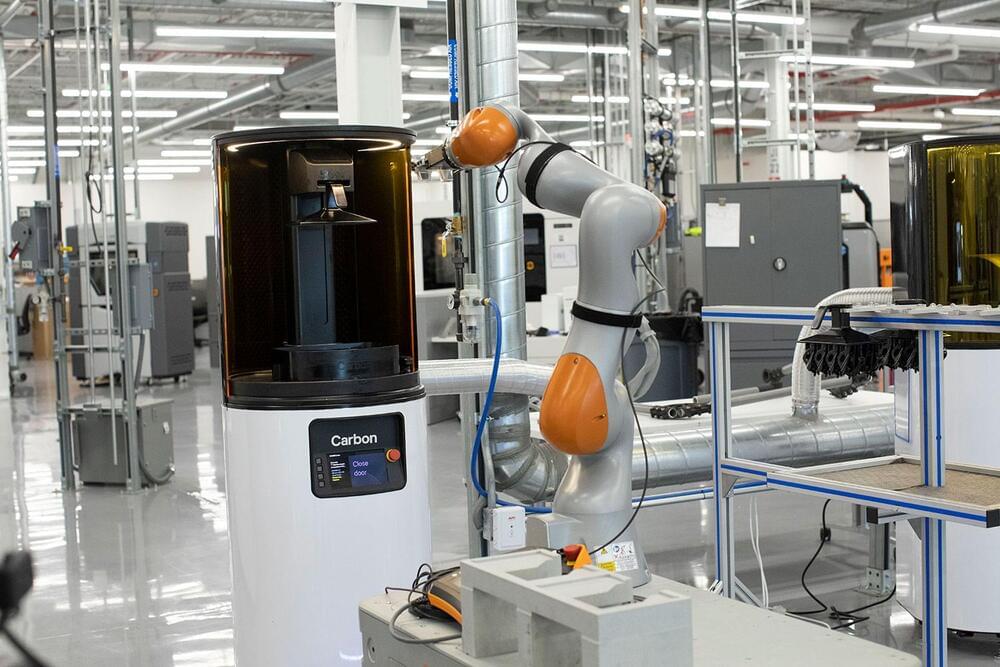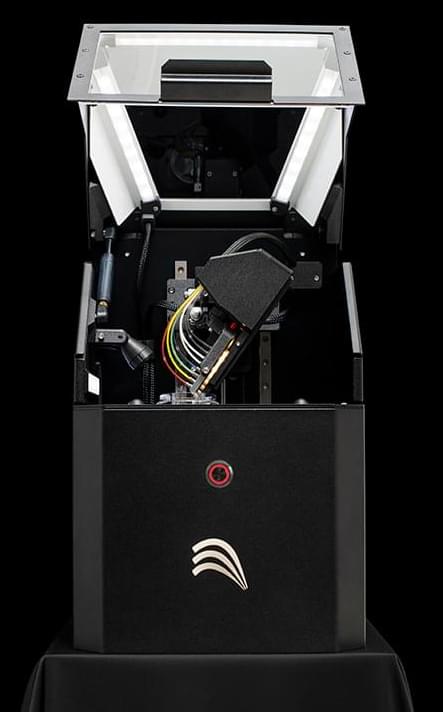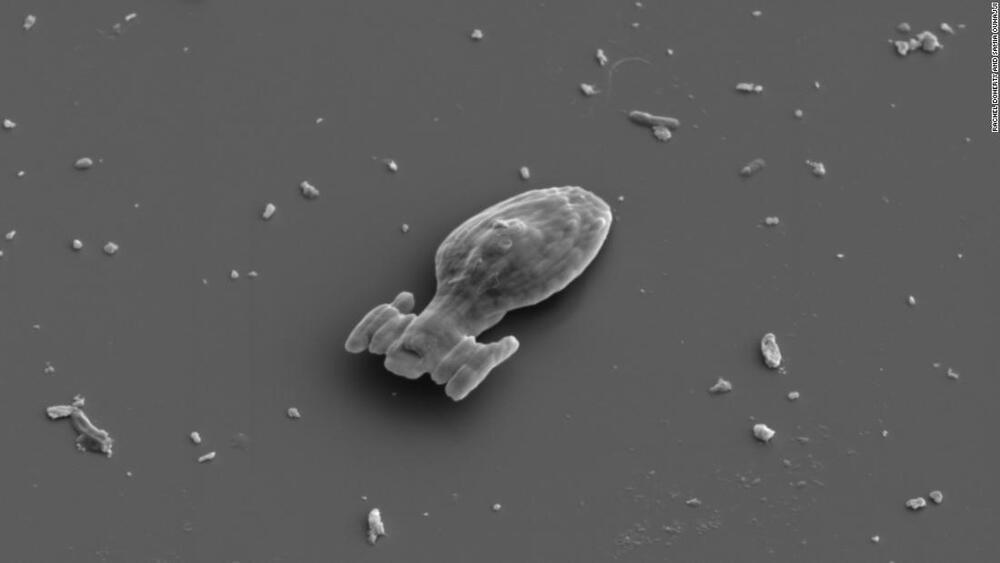The Defense Department, in partnership with the private sector, is building three transient training barracks using advanced 3D printing technology.



Siemens and Roboze have announced that they are collaborating to develop workflows dedicated to the industrialization of 3D printing. This includes an emphasis on expanding the use of the technology in energy, mobility, and aerospace. Though the exact nature of the agreement isn’t fully elucidated, it marks a significant shift for both firms.
Siemens is the largest industrial manufacturer in Europe, with a storied history spanning nearly two centuries and annual revenues totaling €62.3 billion, as of 2021. In contrast, Roboze is a comparatively new firm, established in Italy in 2013. The company has since built itself up into a leader in industrial-grade material extrusion 3D printers, earning such customers as Ducati, GE, and the U.S. Army.
The partners do not exactly clarify their intent except to say that they will work together to “increase the productivity, competitiveness and efficiency of manufacturers that have embarked on the path to the future of industry.” They do mention focusing on “digitalization and automation projects”.

The result is a series of specialized accessories, including a sunglass holder, a can holder, and a phone or cardholder explicitly created for the new Peugeot 308. Made using the latest HP Multi Jet Fusion 3D printing technology, the products are not just innovative but also “pleasant to the touch, light, solid and easy to use.” According to the brand, they go a long way in enhancing the car’s interior, which showcases a new generation of Peugeot’s i-Cockpit –a patented new design that revolutionizes the driver’s cockpit through advanced ergonomics, head-up digital instrument displays, and interactive touchscreen technology.
According to the brand, this is just one of the first 3D printing used at Peugeot, as the company plans to continue implementing it for more technical parts in future car models. Moreover, as part of the PSA Group, which recently merged with Fiat Chrysler Automobiles (FCA) to create Stellantis, Peugeot is now a sister company to 13 other car manufacturers, including Dodge, Jeep, and Maserati, so looking at the bigger picture, we can imagine that the use of additive manufacturing will trickle down to the other brands under the Stellantis umbrella.

Engineers at Ford’s Advanced Manufacturing Center have tasked the innovative robot on wheels – called Javier – with operating the 3D printers completely on its own. The autonomous process enables the 3D printer to run continuously with no human interaction needed, increasing throughput and reducing the cost of custom-printed products.
Ford says Javier is always on time, very precise in its movements, mostly spends its day doing nothing but 3D printing, only taking a “short break” to recharge the batteries. The company has achieved great accuracy with Javier, using its feedback to significantly reduce margins of error. The method can also be applied to a vast array of robots already working at the company to increase efficiency and reduce cost.
Ford has filed several patents for the technology in its drive to innovate. Javier can communicate with Ford’s 3D printer, something that isn’t necessarily as easy to pull off as it sounds. The robot does not require the use of a camera vision system to “see.”



Fluicell, a bioprinting firm based in Sweden, has launched its new high-precision 3D printer, the Biopixlar AER.
Intended as a successor to the original Biopixlar, the device is Fluicell’s second single-cell 3D bioprinting system. The company has designed its latest machine to be as compact and accessible as possible, and claims that it’s the world’s first microfluidic bioprinter that fits inside a standard flow hood or biosafety cabinet. This enables users to easily integrate it with other in vitro and 3D cell culture technologies.
Victoire Viannay, CEO of Fluicell, said, “With Biopixlar AER, we have reached a new important milestone and we can now offer a pioneering product, fully tailored to meet current and future needs in the rapidly accelerating life science and research sector.”

Not long ago, Formlabs launched a new ESD Resin specifically for applications that need to keep parts safe from electrostatic discharge (ESD). Now, the double unicorn has announced the latest member of its selective laser sintering (SLS) range of materials—the new high-performance Nylon 12 GF Powder. Good for 3D printing engineering and manufacturing functional prototypes and end-use parts that require thermal stability and structural rigidity, the newly launched material offers excellent stiffness and is the latest meant for use with the Formlabs Fuse 1 industrial SLS 3D printer, which was released last year.
Formlabs’ Nylon 12 GF powder makes it possible to 3D print parts that are thermally stable, and can maintain their dimensional accuracy under load. In the past, glass-filled Nylon materials have been used for a variety of applications, such as 3D printing a scale model, a prosthetic drum stick, a bike rack, loudspeakers, and even a bar! This particular material—one of many Formlabs is planning to introduce for its industrial Fuse 1 3D printer—is said to be a good choice for printing threads and sockets, strong jigs and fixtures, parts subjected to high temperatures and sustained loading, functional prototypes for compsite parts, and replacement parts.

Following November’s catastrophic flooding events, roughly 600 Merritt residents still haven’t returned to their homes, but a 3D printer may speed up the process. Greg Solecki, the Merritt’s recovery manag.
“Our biggest priority is getting people back to Merritt and into homes and this 3D-printed option is looking like the most viable one right now,” Solecki said.
READ MORE: 3D printing’s new challenge: Solving the US housing shortage
With funding from the province, security guards are also patrolling evacuated homes as of March 4 with the Merritt RCMP reporting a rise in the break and enters, especially in the currently evacuated Phase 4 portion of the city.

Circa 2020 o.o!
A team of physicists at a university in the Netherlands have 3D-printed a microscopic version of the USS Voyager, an Intrepid-class starship from Star Trek.
The miniature Voyager, which measures 15 micrometers (0.015 millimeters) long, is part of a project researchers at Leiden University conducted to understand how shape affects the motion and interactions of microswimmers.
Microswimmers are small particles that can move through liquid on their own by interacting with their environment through chemical reactions. The platinum coating on the microswimmers reacts to a hydrogen peroxide solution they are placed in, and that propels them through the liquid.